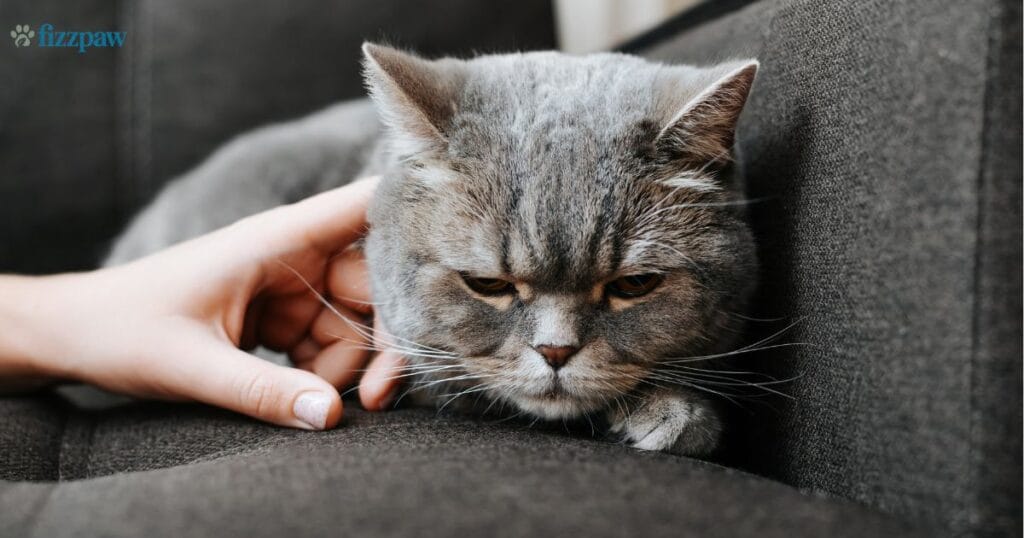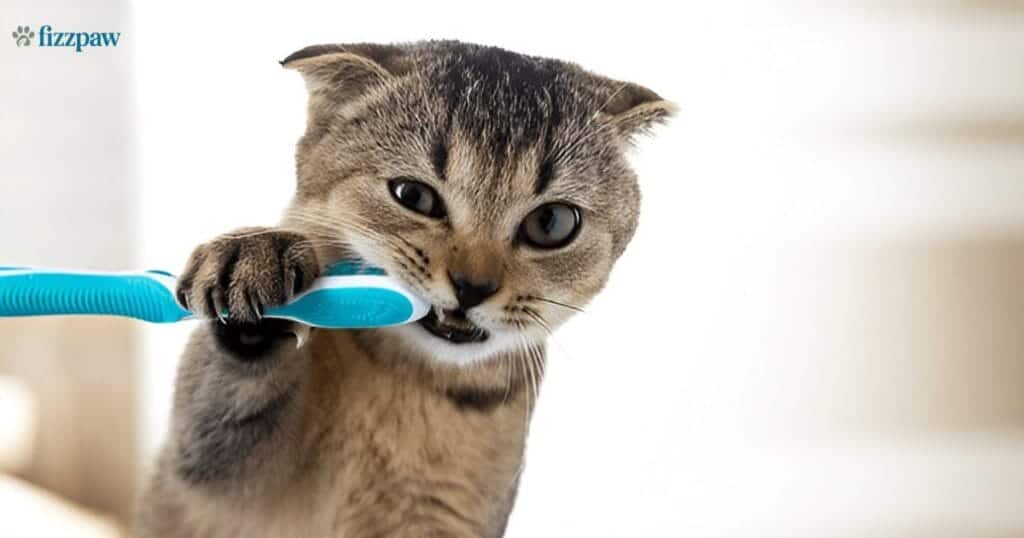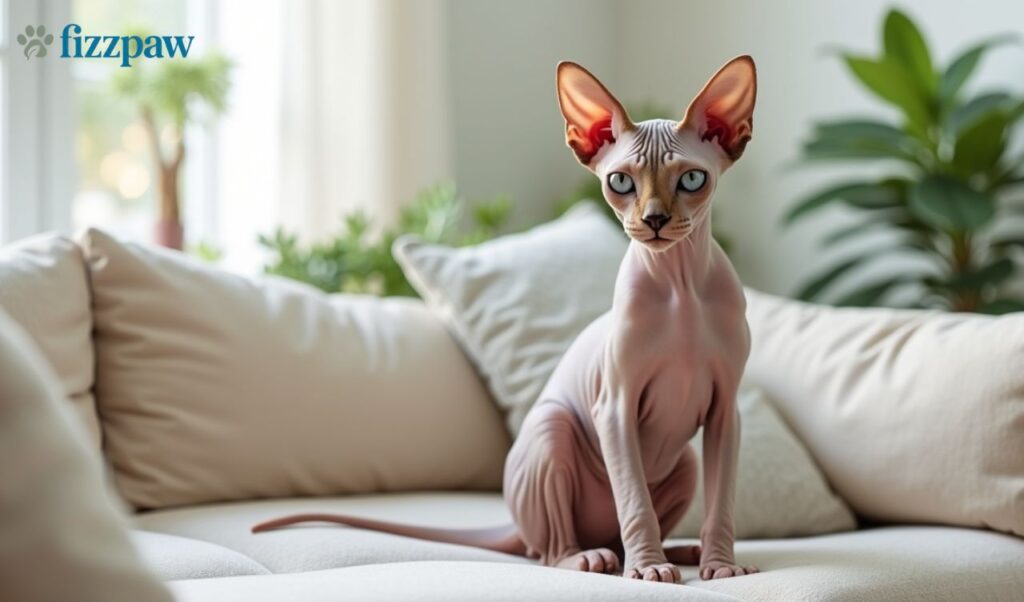Have you asked yourself, “Can I use human shampoo on cats?” The answer is no. Cats have soft skin that is different from ours. Their skin has a special pH balance. If you use human shampoo on cats, it can cause dry skin, skin irritation, or even make them sick with an allergic reaction. Human shampoo is made for people, not cats. So, it is important to use a safe shampoo for cats that a vet recommends. This guide will help you understand why human shampoo is bad for cats and what to use instead.
Like cats, they groom themselves using their tongues. Any leftover residue of shampoo could cause harm if ingested. This guide details the dangers, safe alternatives, and advice from a veterinarian on how to maintain proper hygiene for your cat. If you’re concerned about their comfort in their coat, this article can help educate decisions based on fact-based research, science, and vet advice.
Why You Should Never Use Human Shampoo on Cats

Cats have a different skin pH compared to humans. While our skin tends to be slightly acidic at around 5.5, a cat’s skin is more neutral, usually ranging between 6.0 and 7.5. This specific pH balance is essential for keeping their skin healthy and protected. Shampoos made for humans are designed to match our skin’s needs and pH levels, which makes them unsuitable—and even harmful—for cats. Using human shampoo on cats can disrupt their skin’s natural protective barrier, potentially causing issues like contact dermatitis and dandruff, which can lead to discomfort for your feline friend.
A lot of human shampoos contain synthetic fragrances in shampoo and harsh detergents, as well as sulfates that can cause toxicity of shampoo in animals. Using human shampoo on cats can harm their skin and cause irritation. The ingredients might smell nice to us, but they just aren’t right for cats. The reason human shampoo on cats is harmful because it degrades the oils that they naturally have, and causes products for grooming felines to be ineffective in protecting the skin.
What Happens If You’ve Already Used Human Shampoo?
Do not be concerned if you’ve tried human shampoo on your cat. Be aware of signs such as cat skin irritation, scratching, licking more than usual, or patches of red. Cats may show an allergic reaction that causes vomiting or swelling in the event that they consume something during grooming.
If you observe these warning signs, wash your cat once more with pure water. Don’t apply any additional shampoo. Be sure to monitor your cat for at minimum 24 hours. If the symptoms persist, call your veterinarian. They may suggest a veterinarian-recommended cat shampoo to soothe the skin and prevent further damage.
Is Baby Shampoo Safe for Cats?
Baby shampoos are gentle and safe to use. But baby shampoo is not appropriate for use with cats. It’s true that baby shampoos are designed specifically for human skin. They don’t have the right pH balance that cats’ skin needs. Although it’s not more harmful than normal shampoo, it can still cause dry skin for cats and long-term harm.
A lot of brands contain artificial fragrances, sulfates, and preservatives. In time, this could cause reactions to cat shampoos. Veterinarians advise staying clear of all human shampoos, even those for infants. Instead, stick with veterinarian-recommended shampoos that are made specifically for pets.
What to Use If You Don’t Have Cat Shampoo
In times of need, there are several quick solutions. Make your own shampoo for pets with organic ingredients like oatmeal and baking soda, and castile soap, which is fragrance-free. These shampoos have a mild affect and can be safe until you’ve got the proper shampoos for your pet.
Make sure the solution is well-diluted and does not contain essential oils, such as tea tree’s peppermint, or Eucalyptus. They could be dangerous to cats. Use warm water only to wash, but never scrub too hard. A soft, clean towel is the best way to gently dry them. But these aren’t long-term solutions. Make sure to use grooming products that are specifically made for felines.
check our cat hair length chart to identify your feline friend’s hair type.”
Safe Cat Shampoo Alternatives (Vet-Approved)
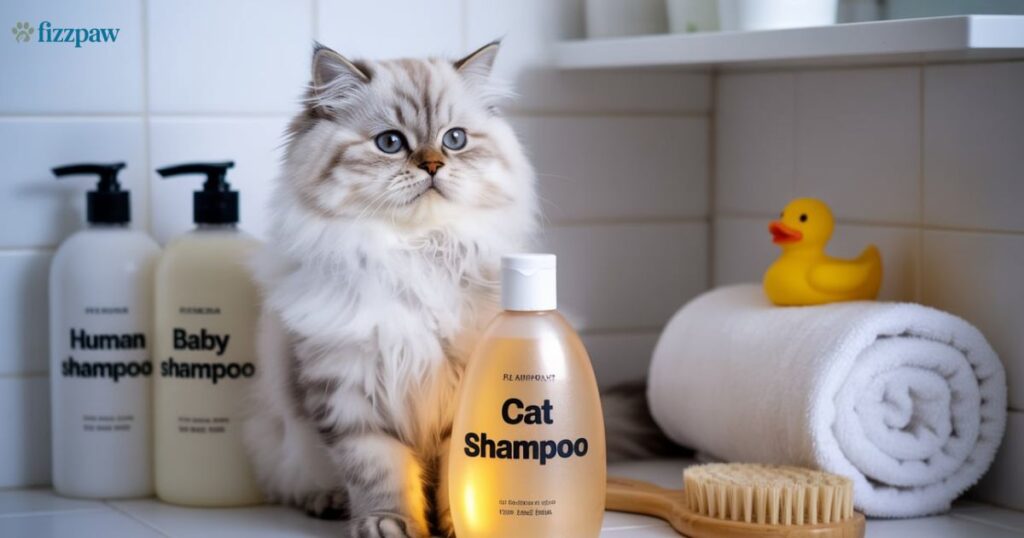
There are a myriad of safe cat shampoos available in retail stores and on the internet. Search for shampoos without sulfates made from natural ingredients such as oatmeal, aloe vera, and coconut oil. They have moisturizing ingredients that help keep pets’ skin healthy and their coats shiny.
| Product Name | Features | Vet Approved? |
| Vet’s Best | Aloe, no fragrance | Yes |
| Earthbath | Natural cat shampoo, oatmeal | Yes |
| Burt’s Bees | pH balanced, no sulfates | Yes |
Avoid shampoos that contain coal tar as shampoo and salicylic acid found in pet shampoos, or colorants. These ingredients could be used to treat skin problems in humans however, they can also cause fungal skin irritations in pets if used improperly.
How to Pick the Perfect Cat Shampoo for Healthy Skin and Fur
Each cat has its own grooming requirements. Some cats have hair that is thick hair. Others may have sensitive skin. If your cat is dealing with dandruff or allergies, it’s best to choose a shampoo specially made for sensitive skin or one that’s antifungal and safe for cats. They are designed to address specific issues without harmful negative effects.
Beware of strong smells and foaming shampoos. A higher amount of foam usually means more chemicals. Be sure to read the label. Make sure you choose shampoos with only simple natural ingredients, and without added colouring agents. Always make sure the shampoo you choose is vet-recommended, as indicated on the label.
If grooming causes pain, consider natural pain relief for cats.
How Often Should You Bathe a Cat?
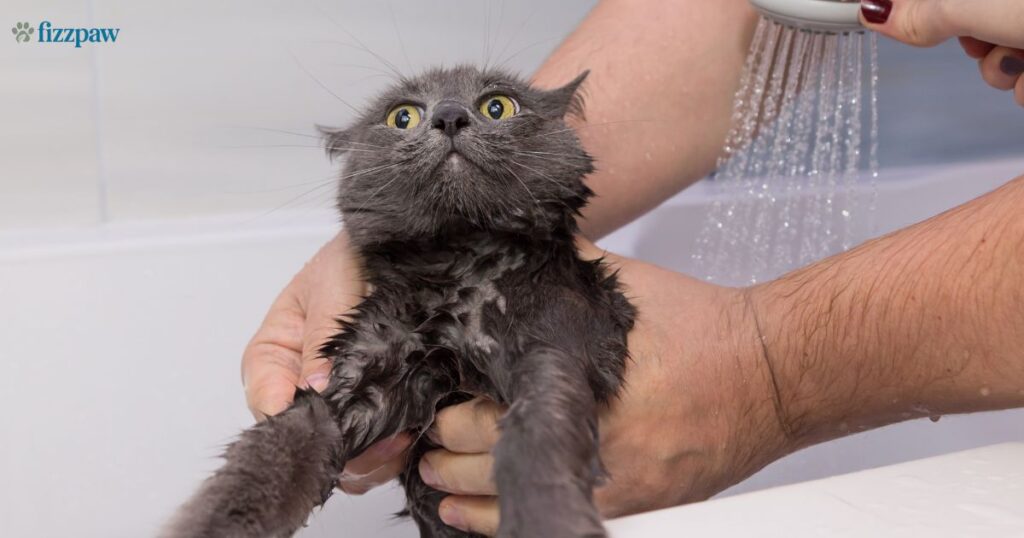
A cat who bathes too frequently can develop dry skin for cats, or stress. Cats living indoors may only require a bath once every few months. Cats that spend time outdoors or have certain medical issues might need a bath every few weeks. However, bathing them too often can strip their skin of natural oils and damage their protective barrier.
The guidelines for pet baths recommend brushing frequently and using waterless alternatives for cats who are afraid of water. If you’re not sure, consult your veterinarian about the breed of your cat and its habits. They’ll be able to help you create an animal care plan that will work best for your cat.
Natural Cleaning Options Between Baths
Bathing isn’t necessary every time. Between washes, make use of homemade cat wash wipes and dry foams. You can try natural alternatives to cat shampoo, like a diluted apple cider vinegar rinse or a light dusting of baking soda to help neutralize odors safely.
Regular gentle brushing and the use of grooming wipes can help remove excess oil and dust, keeping your cat’s coat clean and healthy. You can also purchase cat-safe grooming products, such as sprays or dry shampoos, that are made from coconut or oatmeal milk. These options help keep your cat fresh and clean—no water needed.
Common Mistakes to Avoid When Washing Cats
There are many mistakes made by people when bathing their cats. The wrong temperature of water or pouring water on their ears could upset them or cause an infection. Another error is using powerful soaps, which can lead to contact dermatitis among cats and skin irritations in cats.
Not brushing your cat prior to bathing can cause mats to become more prone to. Also, if not rinsed properly, leftover shampoo can cling to their fur and cause irritation or itchiness. This can be avoided with the use of grooming products for cats that are designed to be gentle.
Final Tips for Stress-Free Cat Grooming
The process of bathing your cat doesn’t need to be difficult. Find a quiet time, such as after eating or after playing. Be calm and enjoy sweets to make your enjoyment more enjoyable. Set aside towels and tools, including non-slip mats, as well as soft brushes.
Make use of cat grooming products slowly and with patience. Speak to your cat with soft voices. A cat that is happy is a happy bath. Always make sure you use a shampoo recommended by your vet that promotes a healthy coat and skin. This way, your cat is well-protected and looks beautiful too. Always ask yourself, human shampoo on cats is not safe; use only cat-specific shampoos to protect your furry friend’s skin and coat.
Conclusion
It’s tempting to apply one of your shampoos when your cat is filthy, but it’s not an option that’s safe. The most effective way to ensure that your cat stays healthy and clean is to choose pet-friendly shampoos and understand the difference in pH between the skin of a cat and a human, and use products approved by a vet. Now you understand what the reasoning behind Do I have to apply human shampoo to my cat? is always a firm “no.”
Frequently Asked Questions.
Which human shampoo is safe for cats?
Human shampoos aren’t safe for cats. Their skin is different from ours, and some ingredients in our products can be harmful to them. It’s always safest to use shampoos made just for cats.
What to use if you don’t have cat shampoo?
In special cases, you might be able to use a vet-approved option like unscented baby shampoo or a gentle homemade cat wash. But always check with your vet first and use it carefully.
What shampoos are safe for cats?
Use cat shampoos that your vet recommends. Make sure they don’t have sulfates or added scents, and that they’re made to match your cat’s skin needs.
What can I use on my cat to wash him?
Be sure you bathe your feline in warm water and shampoo designed specifically for cats. Avoid using human products—they can irritate your cat’s skin and cause allergic reactions.
What soap can I wash my cat with?
Stick to gentle, pet-safe soaps or natural cat shampoos. These help keep your cat’s skin from getting dry or irritated.


